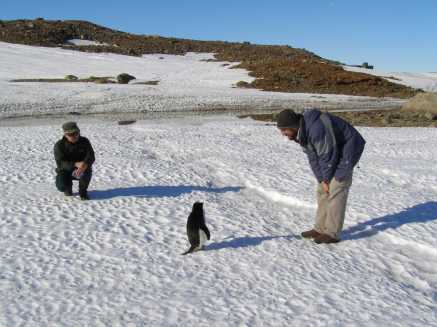- Where is Antarctica?
It is found at the bottom or south on the earth. It covers the South Pole with a surface area approximately twice the size of Australia. The other continents that are closest to Antarctica are South Africa, Australia and the closest is the southern tip of South America, which is only 1000 km away.
- What are its natural attributes?
Cold, icebound land. The entire area is made of ice. It contains 90% of the worlds ice, and 70% of the world’s fresh water.
- How is Antarctica changing?
Over the past 50 years, the west coast of the Antarctic Peninsula has been one of the most rapidly warming parts of the planet. This warming is not only restricted to the land but can also be noted in the Southern Ocean. Upper ocean temperatures to the west of the Antarctic Peninsula have increased over 1°C since 1955. It has now been established that the Antarctic Circumpolar Current is warming more rapidly than the global ocean as a whole. Studying climate change in Antarctica is important because it enables scientists to predict more accurately future climate change and provide information to politicians and policy makers.
- How is life in Antarctica connected?
Even in Antarctica, environmental folly has played its part. Modern technology has brought with it: waste, tourism, overfishing, habitat destruction, and the potential for resource exploitation. What’s more, global environmental concerns such as: global warming, ozone destruction, air and water pollution, and nuclear fallout all affect the southern continent to one degree or another.
- What has been the effect of human activities, on Antarctica?
More recently attitudes have changed as we begin to realize that there are few unvisited places left on Earth and that they are of enormous value to humanity. The clean air, water and ice of Antarctica are now of global importance to science for understanding how the Earth’s environment is changing both naturally and as a result of human activity. Tourist operators are beginning to tap into the huge demand to visit the last great wilderness on Earth. Paradoxically both science and tourism have the potential to damage the very qualities that draw them to Antarctica.
- Who explored Antarctica in the past and why?
It was not until Prince Henry the Navigator began in 1418 to encourage the penetration of the torrid zone in the effort to reach India by circumnavigating Africa that European exploration of the southern hemisphere began. In 1473 Portuguese navigator Lopes Gonçalves proved that the equator could be crossed, and cartographers and sailors began to assume the existence of another, temperate continent to the south of the known world. Sir Edmund Hillary lead the New Zealand section of the Commonwealth Trans-Antarctic expedition, in 1958. Hilary’s section was the first to reach the pole since Scot, in 1912, making him the third man to ever reach the pole. He also commentated a number of sight-seeing flights over the continent during the 1970′s, and established the Marble Point runway, in 1957. Hilary’s first-hand accounts of the continent’s many dangers are still required research for people planning to visit Antarctica. His achievements were so great that he is honored (and was in his lifetime) through being the main image on a New Zealand $5 note.
- What do scientists research in Antarctica?
Scientists from all over the world visit Antarctica to study the climate, weather, geology, and wildlife of this unique region. Their research has helped to highlight global problems, such as climate change.
- What were/are the difficulties in exploring Antarctica?
It is so very cold in Antarctica and very hard to find food unless you can swim in icy cold water or are extremely fast, and would be ;prepared to eat a wolf or a dead penguin or something along those lines. And course if you had brought food with you.. that’s another story.
- How do humans impact on an environment?
Exploration and exploitation of mineral reserves, oil and gas. Not currently economically viable, but as the need becomes greater and as technology advances, this will become an increasing threat. The Antarctic Treaty bans all mining and mineral exploitation indefinitely, through this comes up for review in 2048 (in other words, it isn’t really banned indefinitely at all).
- What has been the effect of human activities, on Antarctica?
More than twice the size of the United States, Antarctica has no cities, no government and no permanent residents. All who go to Antarctica are short-time visitors, whether they are scientists, personnel that support scientists or tourists. Antarctica is the coldest, driest and windiest location on Earth and is the only continent with no time zones.
Sources:
https://antarcticaforkids.wordpress.com/where-is-antarctica/
http://www.answers.com/Q/What_are_antarctica_natural_attributes
http://www.discoveringantarctica.org.uk/alevel_5_1.html
http://www.antarctica.gov.au/environment/human-impacts-in-antarctica
http://en.wikipedia.org/wiki/History_of_Antarctica
http://listverse.com/2010/12/04/8-greatest-antarctic-explorers/
http://www.factmonster.com/dk/encyclopedia/antarctica.html
http://www.answers.com/Q/What_are_the_difficulties_in_exploring_Antarctica
http://www.coolantarctica.com/Antarctica%20fact%20file/science/human_impact_on_antarctica.php
http://www.sciencedaily.com/releases/2012/07/120712153113.htm
